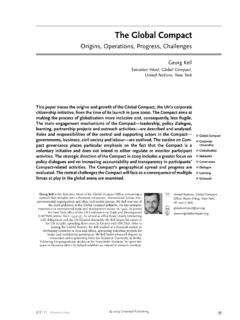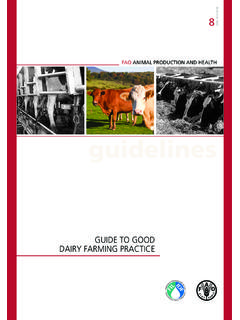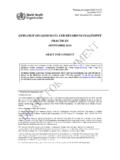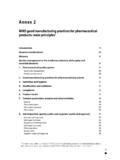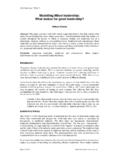Transcription of Doing Better at Doing Good
1 Doing Better at Doing good :WHEN, WHY, BhattacharyaSankar SenIn recent years, few notions have so fully captured the corporate imagi-nation as that of corporate social responsibility (CSR), defined broadlyas a company s status and activities with respect to its perceived societalor, at least, stakeholder obligations. 1 While CSR is by no means a newidea,2more companies than ever before are backing CSR initiatives such as cor-porate philanthropy, cause-related marketing, minority support programs, andsocially responsible employment and manufacturing practices and they aredoing so with real financial and marketing web sites of more than80% of the Fortune 500companies address CSR issues, reflecting the pervasivebelief among business leaders that in today s marketplace CSR is not only anethical/ideological imperative, but also an economic other words, com-panies today are increasingly aware of both the normative and business case for engaging in CSR.
2 5not only is Doing good the right thing to do, but it alsoleads to Doing Better through its positive effects on key stakeholder important stakeholder group that appears to be particularly suscep-tible to a company s CSR initiatives are its customers; marketplace polls suggestthat a positive relationship exists between a company s CSR actions and con-sumers reactions to that company and its product(s).6 For example, the 2002 Corporate Citizenship poll conducted by Cone Communications finds that 84%of Americans say they would be likely to switch brands to one associated with a good cause, if price and quality are similar. 7 Similarly, a 2001 Hill & Knowl-ton/Harris Interactive poll reveals that 79% of Americans take corporate citi-zenship into account when deciding whether to buy a particular company sproduct and 36% consider corporate citizenship an important factor when mak-ing purchasing decisions.
3 8 These findings are corroborated by a growing body of9 CALIFORNIA MANAGEMENT , 2004 The authors thank the Hitachi foundation for their generous support of this research that attests to the generally positive influence of CSR acrossa range of product categories on consumers company evaluations and productpurchase positive link of CSR to consumer patronage is spurring companies todevote greater energies and resources to CSR initiatives. In other words, the lureof greater consumer profits has contributed significantly in recent years to thestrengthening of the business case for CSR activity, shifting the debate aboutCSR from whether to how. Notably, however, a clear articulation of the how question is not a straightforward matter. Moral imperatives notwith-standing, business leaders are struggling with the appropriate goals guiding theformulation and deployment of CSR initiatives that will reap the greatest bene-fits for their companies.
4 They are also, at the same time, realizing the concomi-tant and urgent need to measure the returns to various CSR programs. To thisend, many companies are beginning to embrace practices such as social audits,corporate social reporting, and the triple bottom research shows that consumer reactions to CSR are not as straightfor-ward and evident as the marketplace polls suggest; there are numerous factorsthat affect whether a firm s CSR activities translate into consumer (when asked directly) peoplesaythat CSR matters in their purchasedecisions, the statistics reported in these aggregate marketplace polls mask thereal nature of customer response to CSR initiatives. Take for example the case of PNC bank. Its web site documents itssupport of a wide variety of initiatives,asserting that from arts to education tohealthcare, PNC funds programs that makea difference.
5 However, are each of theseinitiatives viewed equally favorably byPNC s customers? Furthermore, in whatother ways apart from a switch to PNCbank do customers react to their CSR initiatives? Price and quality are rarelyequal (recall the question posed by the Cone Communications survey), makingit difficult for managers to gauge the implications of the poll findings for CSRstrategies in the marketplace. In other words, it is difficult for companies toformulate, implement, and evaluate effective CSR strategies based on suchinformation alone. It is important for managers to understand how and whyconsumers respond to CSR initiatives, and our research-guided framework canhelp with that difficult understanding consumer reactions to CSR, firms can develop CSRstrategies that are optimal from not only a normative perspective, but also abusiness one.
6 Such an understanding hinges on three basic ideas, depicted inFigure 1. First, in thinking about CSR initiatives from a consumer perspective, one size does not fit all. Second, in thinking about the consumer-specific out-comes of CSR, companies need to consider not only external outcomes such aspurchase and loyalty, but internal ones such as consumers awareness, attitudes, Doing Better at Doing GoodCALIFORNIA MANAGEMENT , Bhattacharya is an Associate Professor ofMarketing at the School of Management atBoston University. Sen is an Associate Professor of Marketingat the Zicklin School of Business at BaruchCollege, CUNY. attributions about why companies are engaging in CSR activities. This isparticularly important given that in the face of decreasing product differentiationand heightened competition, CSR initiatives are an innovative and less-imitablemeans of strengthening customer relationships.
7 Similarly, given the relationship-strengthening nature of CSR, companies need to go beyond brand purchasebehavior as an outcome of CSR to understand other more relational behaviors,such as word-of-mouth and resilience to negative company information. Finally,a key distinction between marketing mix attributes such as promotions (whichCSR is often associated with) and CSR initiatives lies in the multi-faceted impactof the latter. Beyond the primary impact on the brand and company, CSR ini-tiatives can also influence secondary outcomes related to both the partnerorganizations ( , nonprofits) and the cause or social issue at the core of thecompany s CSR efforts. For example, the cross-sector partnership between HomeDepot and Habitat for Humanity may not only influence customers perceptionsand behaviors towards Home Depot and its products, but also enhance theirsupport ( , money, time) of Habitat for Humanity as well as their attitudestowards the issue of housing for the underprivileged.
8 These secondary outcomesof CSR are something companies interested in gauging the social return ontheir CSR investments need to Better 2 presents a detailed articulation of when, how, and why CSRworks. Using a variety of methodologies such as focus groups, in-depth inter-views, surveys, and experiments,11our research on various facets of consumerreactions to CSR supports what we call a contingent, consumer-centric concep-tualization of Better at Doing GoodCALIFORNIA MANAGEMENT , 200411 FIGURE View of CSRC ompanyBenefitstoCompanyBenefitstoConsume rBenefitstoIssue/CauseConsumerCSRI nitiativesCompetitionA Contingent Framework of CSRO verview of FindingsOur research reveals three key findings. First, there is significant hetero-geneity across consumers in their reactions to CSR initiatives; what works forone consumer segment does not work for another.
9 Second, the impact of CSRinitiatives on outcomes internal to the consumer ( , awareness, attitudes,and attributions) is significantly greater and more easily assessable than itsimpact on the external or visible outcomes ( , purchase behavior, word-of-mouth). Third, the focal company is not the only one that benefits fromDoing Better at Doing GoodCALIFORNIA MANAGEMENT , 200412 FIGURE SupportDiversityEmployee SupportEnvironmentNon-US OperationsProductInvestmentMoney/GoodsTi mePersonnelExpertiseConsumerCSRS upportOverall AttitudesCompanyMarketing StrategyIndustryReputationSize/Demograph icsCSRD istinctivenessCoherenceReputation (Cause)FitConsumerSegment CharacteristicsCompanyMarketing StrategyCompetitorsCSRA ctivityMarketing StrategyCompanyAwarenessAttributionsAtti tudeAttachmentConsumerWell-beingIssue/Ca useAwarenessAttitudeCompanyPurchasePrice PremiumLoyaltyWOMR esilienceConsumerBehaviorModificationIss ue/CauseSupport:Time,Money,WOMI nputOutcomes:InternalOutcomes.
10 Externalengaging in CSR initiatives; both consumers and the social issues the initiativesrepresent benefit as well. This multifaceted impact of CSR distinguishes it fromthe other traditional marketing mix attributes ( , promotions) and, together,our findings point out the myopic nature of the studies that focus solely on thebehavioral benefits of CSR to the on these findings, our CSR framework is separated into three broadparts the company-specific inputs, and the internal and the external outputsfrom consumers that benefit the focal company, the consumers themselves,and the social issues. In light of the heterogeneity we observed in consumerresponses, our model reflects two sets of multiplier factors (depicted throughthe dotted line relationships) that moderate the effects of the CSR initiatives onthe internal outcomes and that moderate the effects of the internal outcomes onthe external outcomes.
